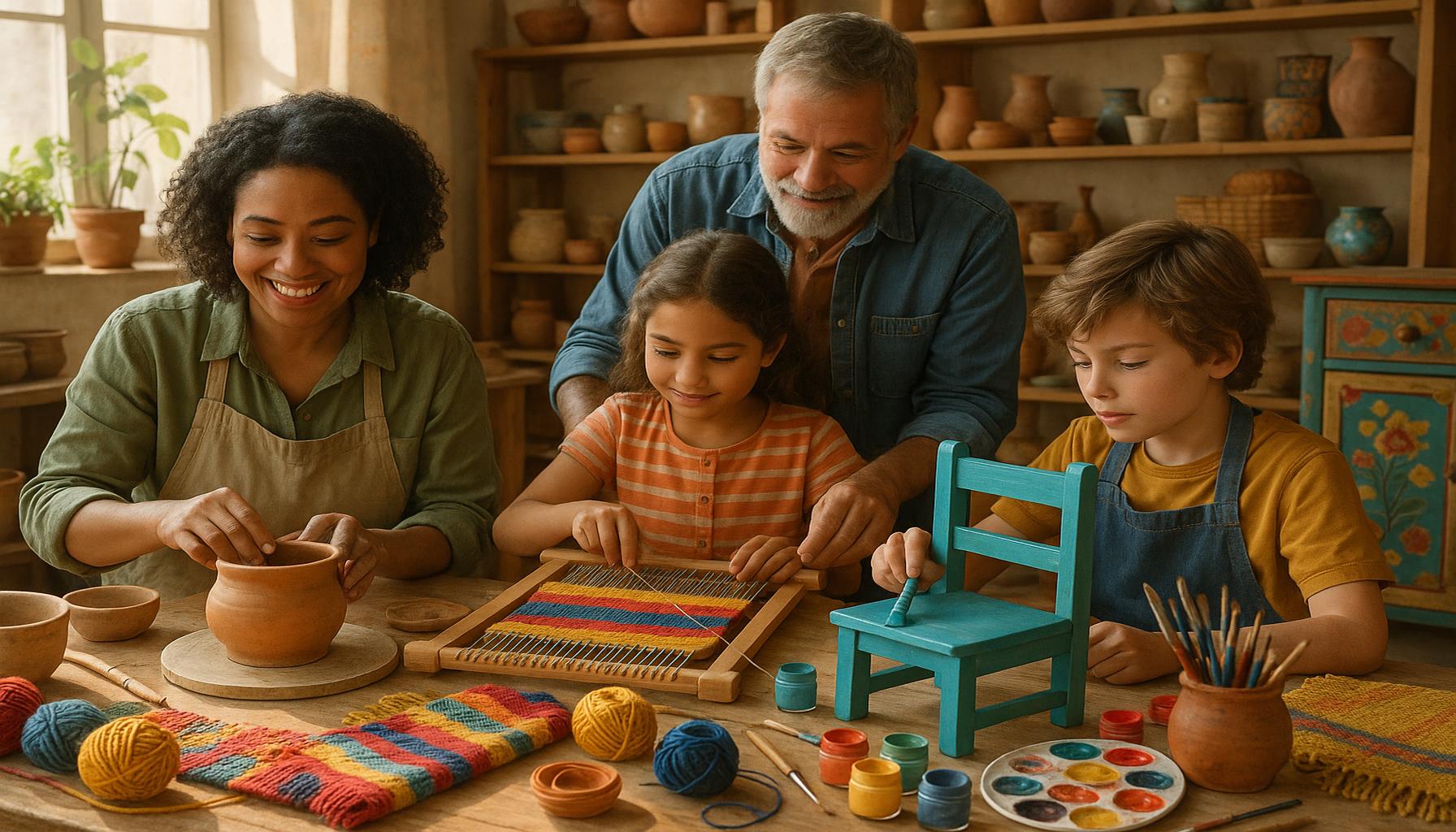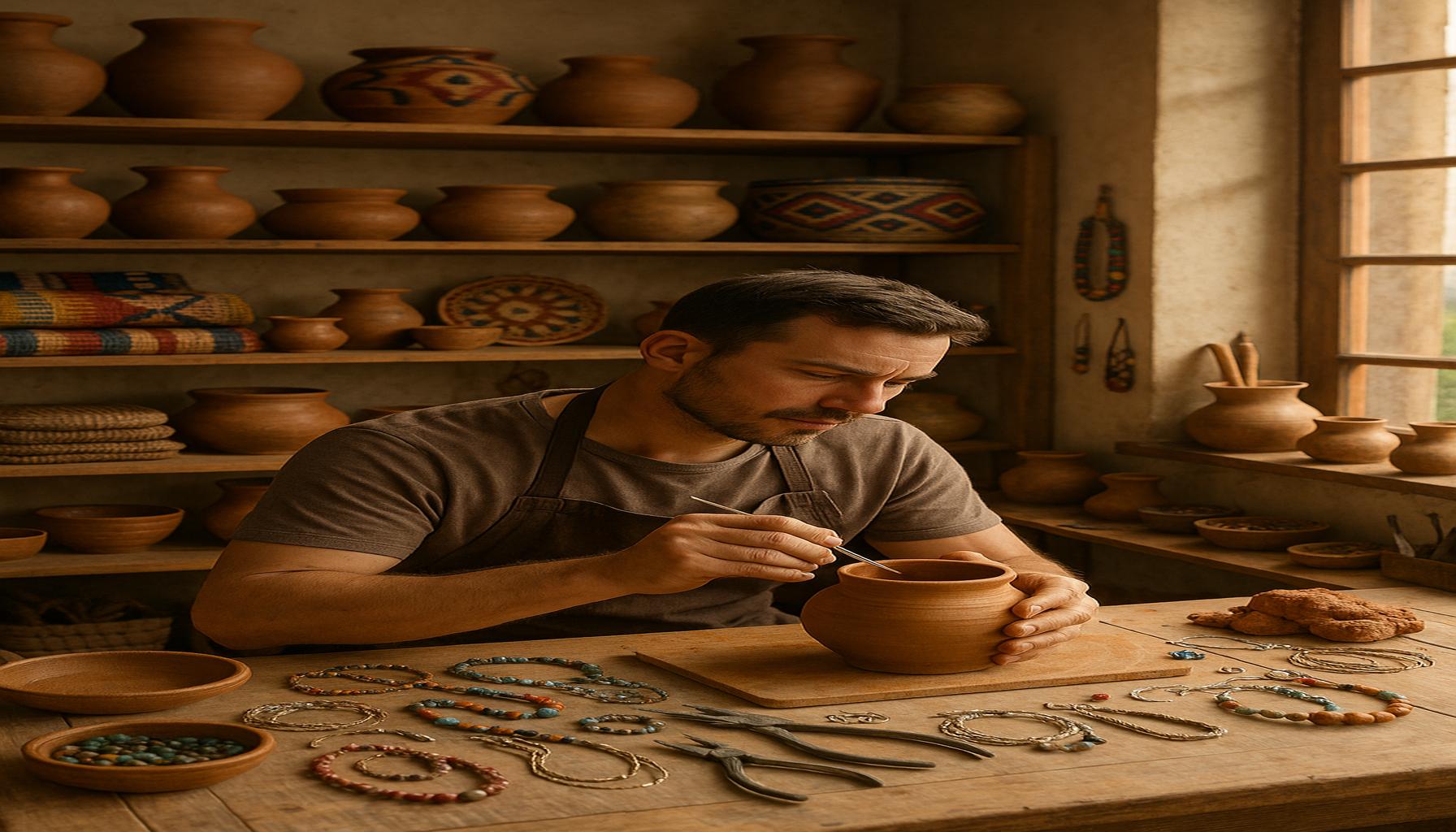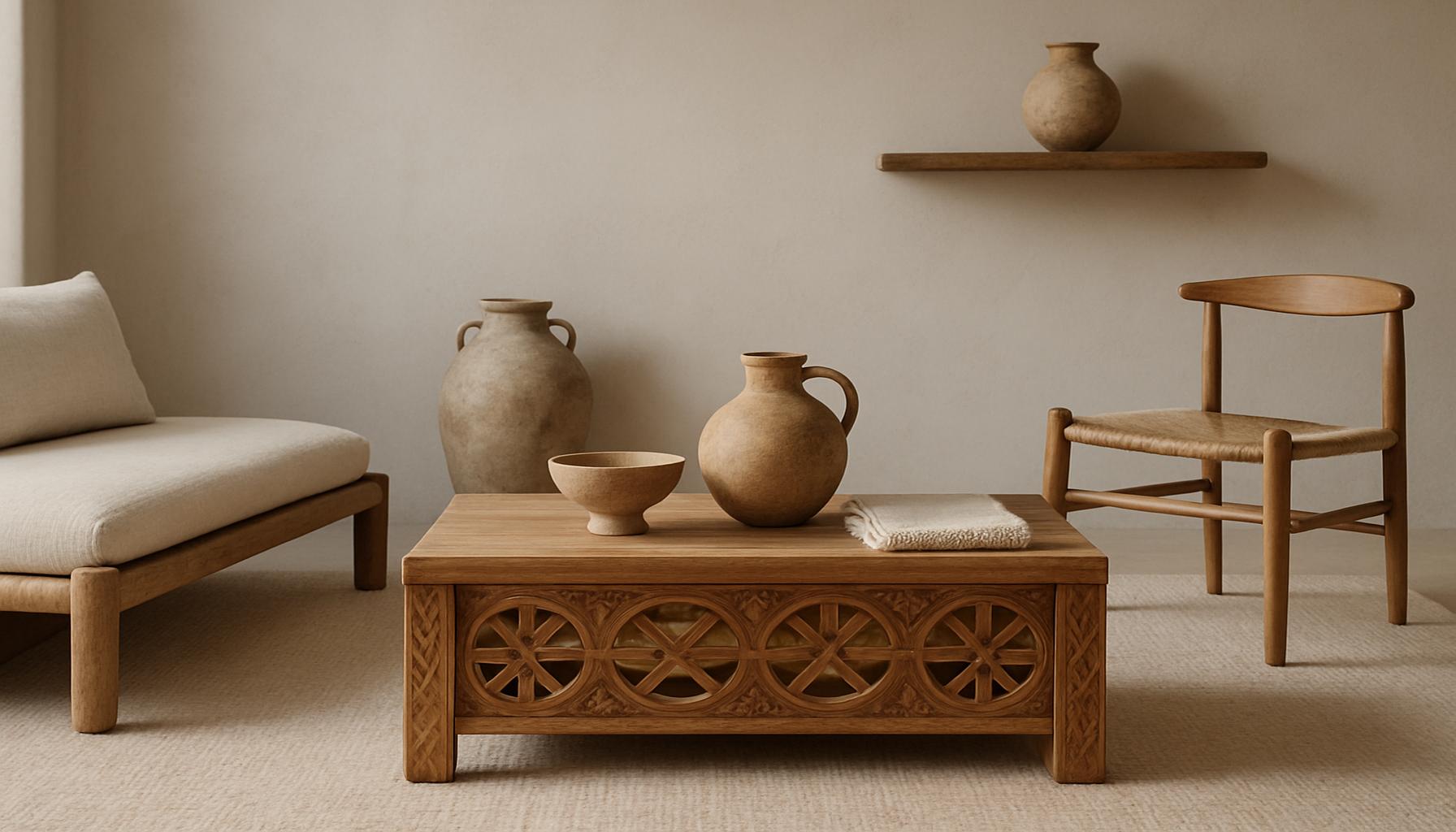Craft and Technology: How 3D Printing is Revolutionizing the DIY World
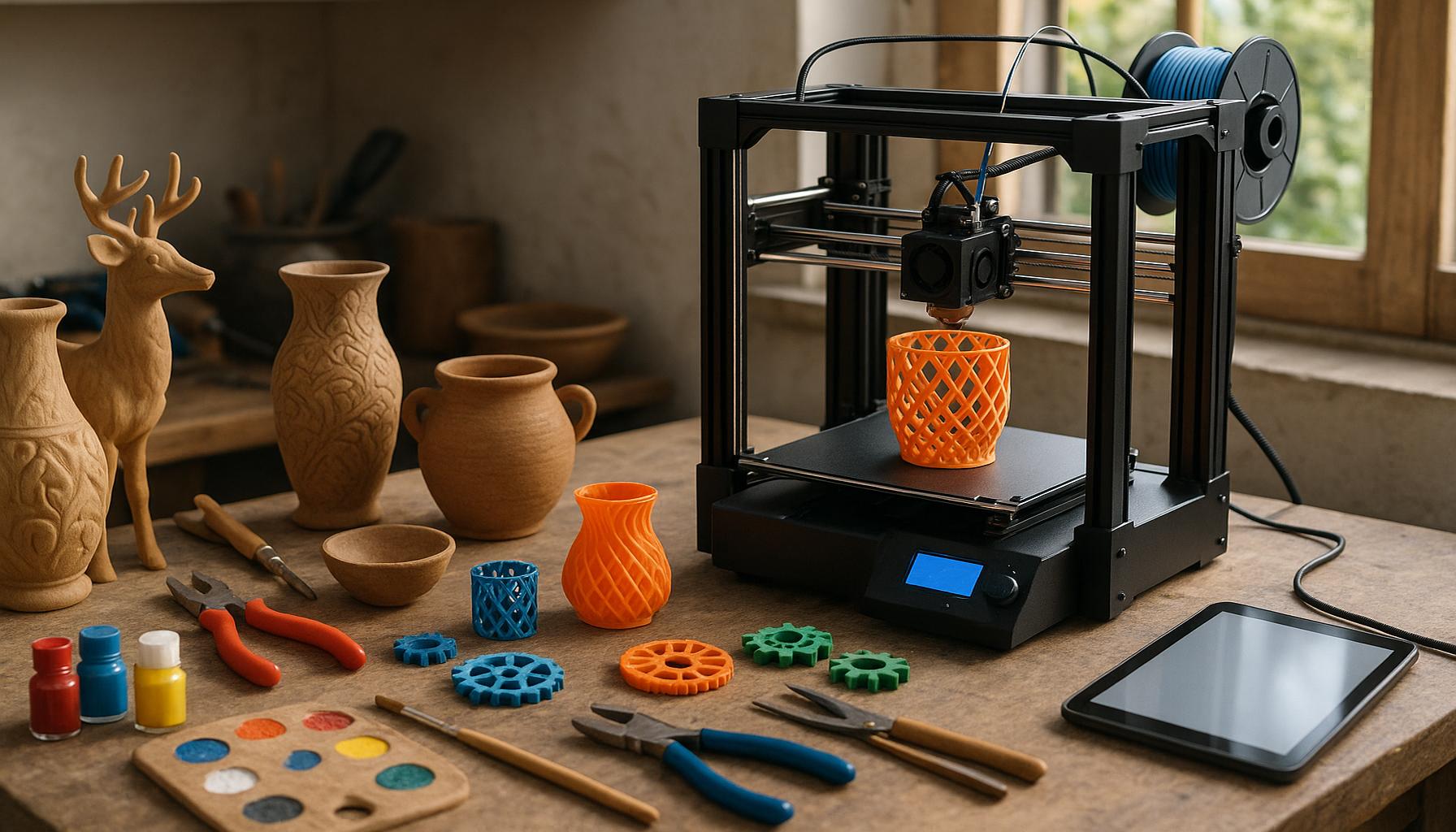
Exploring the Fusion of Craft and Technology
The integration of advanced technology into the crafting world has given birth to an exciting era of innovation where creativity knows no bounds. One of the most significant advancements driving this transformation is 3D printing, a technology that allows users to create three-dimensional objects from digital designs. With a range of user-friendly 3D printers now available, enthusiasts can turn their imaginative concepts into tangible creations with remarkable ease.
Customizability is one of the standout advantages of 3D printing. Users can design and print objects tailored to their specific needs or preferences. For instance, a hobbyist might create custom kitchen utensils that fit perfectly in their hands or design unique jewelry pieces that reflect personal tastes. The ability to modify existing designs or create entirely new ones from scratch takes personal expression to new levels.
Another significant benefit is affordability. As 3D printing technology has matured, the costs associated with purchasing a printer and materials have decreased considerably. This shift has made 3D printing accessible not only to professionals in engineering and design but also to hobbyists and DIY enthusiasts. Nowadays, platforms like Thingiverse and MyMiniFactory provide thousands of free or low-cost designs for individuals to download, print, and incorporate into their projects.
Rapid prototyping is a game-changer for inventors and creators. Instead of spending weeks or months refining designs and prototypes, individuals can quickly produce and test multiple versions of their ideas. For example, a product developer can assess the ergonomics of a smartphone case or fine-tune the aesthetics of a prototype toy within a matter of hours, streamlining the path from idea to commercial product.
Across the United States, makerspaces and community workshops are at the forefront of this crafting revolution. These collaborative spaces serve as hubs where individuals from various backgrounds come together to share expertise, learn new skills, and explore the limitless potential of 3D printing. In cities like San Francisco, New York, and Austin, local makerspaces often host workshops that educate participants on how to harness 3D printing for personal and professional projects.
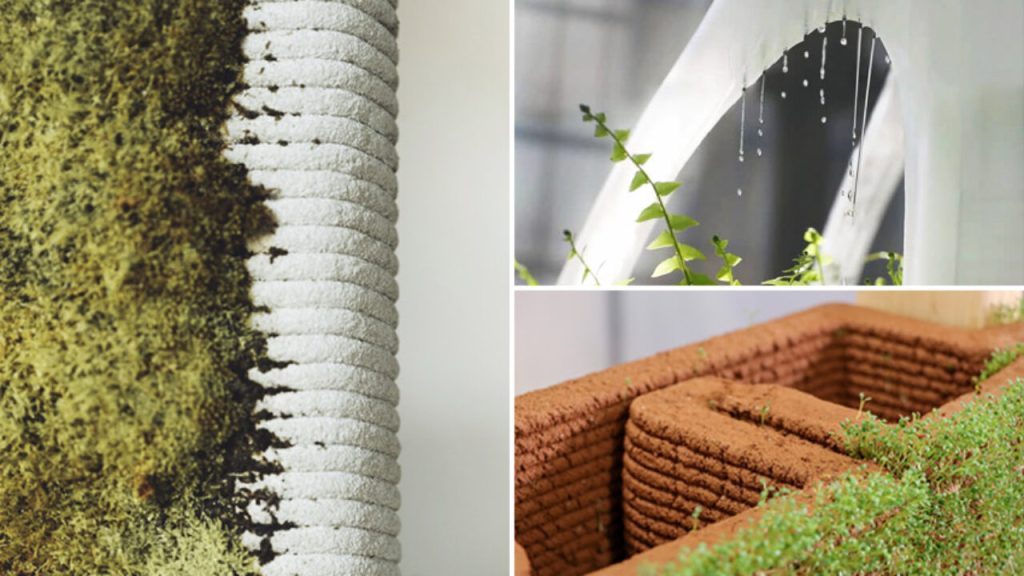
As advancements in printing materials and techniques continue to evolve, the future of 3D printing in crafts looks promising. From creating personalized gifts like custom trophies and decorations to producing functional home decor items such as bespoke furniture and lighting fixtures, the influence of this technology is reshaping the landscape of making and creating. The journey from digital idea to physical object is becoming seamless, encouraging even more innovation in the crafting community.
In summary, 3D printing is not just a trend; it represents a significant shift in how individuals approach crafting. The combination of customizability, affordability, and rapid prototyping leads to a rich tapestry of creative possibilities. As this technology continues to develop, it invites everyone—young and old—to explore their potential as makers and creators.
DISCOVER MORE: Click here to learn about the benefits of creative writing for mental health</p
Empowering Creativity Through Simplified Processes
The democratization of 3D printing technology is transforming how individuals engage with crafts, making advanced manufacturing accessible and user-friendly. With the touch of a few buttons, anyone can go from a digital design on a computer to a physical object in a matter of hours. This process used to require extensive knowledge and experience, but today, beginner-friendly software and printers have lowered the barrier to entry for aspiring makers.
For many, the potential of 3D printing extends beyond mere hobbyism. Educators are incorporating this technology into classrooms to cultivate creativity and critical thinking in students. Programs that bring hands-on learning through 3D printing are becoming a staple in schools across the United States, promoting skills that are essential in the fast-evolving job market. The tangible nature of these projects helps students grasp complex concepts in science, technology, engineering, and mathematics (STEM) by creating real-world applications of their learning.
Versatile Applications in the DIY Sphere
The versatility of 3D printing has led to its adoption across various DIY applications, enhancing the crafting experience in unimaginable ways. Some popular applications of 3D printing in the DIY world include:
- Home Decor: Whether it’s customizing wall art or creating unique furniture pieces, 3D printing allows for infinite design possibilities that can fit any lifestyle or aesthetic.
- Fashion: Innovative designers are utilizing 3D printing to produce accessories, such as belts, bags, and shoes, that are custom-fitting and environmentally sustainable.
- Repair and Replacement Parts: DIY enthusiasts can create items that may be obsolete or expensive to replace, such as specific components for household appliances or vehicles, reducing waste and costs.
- Toys and Games: Parents and hobbyists can design and print unique toys, action figures, or board game pieces, adding a personal touch to playtime.
Furthermore, the rise of online communities has played a crucial role in the proliferation of 3D printing within the DIY space. Open-source initiatives and social media platforms allow creators to share designs, tutorials, and experiences. Websites like Thingiverse and MyMiniFactory foster a collaborative environment, where individuals can not only download and print existing designs but also contribute their own creations, turning the process of crafting into a shared journey of discovery.
As the realm of 3D printing continues to evolve, it becomes clear that this innovative technology is reshaping the crafting landscape. By empowering creators with the tools to bring their visions to life, 3D printing has established a unique intersection between craftsmanship and technology, fostering a creative culture that thrives on experimentation and exploration.
Innovation in the DIY Community
The advent of 3D printing technology has fundamentally transformed the DIY landscape, enabling enthusiasts and creators to bring their ideas to life with unprecedented ease and precision. One of the primary benefits of 3D printing is the ability to design custom prototypes and products from the comfort of one’s home. Gone are the days when DIY projects required extensive resources and expertise; today, anyone can utilize user-friendly design software to create personalized objects tailored to their specific needs.Furthermore, 3D printing facilitates a sustainable approach to crafting. By allowing users to print only the exact amount of material needed for a project, waste is significantly reduced. This aligns perfectly with the growing movement towards environmentally conscious crafting, where creators strive to minimize their ecological footprint while producing innovative designs.Another intriguing aspect is the rise of online communities dedicated to sharing 3D printable designs. Platforms like Thingiverse and MyMiniFactory are teeming with user-generated content, providing a treasure trove of inspiration and resources for DIY enthusiasts. These communities encourage collaboration, enabling individuals to learn from one another and refine their skills through shared experiences.As 3D printing technology continues to evolve, its applications within the DIY sector promise to expand even further. From educational tools to intricate home decor, the possibilities are virtually limitless. For those eager to explore this fascinating intersection of craft and technology, the future of DIY holds exciting potential to revolutionize not only how we create but also how we connect with one another in the process.
| Advantage | Description |
|---|---|
| Customization | Allows creation of unique designs tailored to personal or project specifications. |
| Sustainability | Reduces waste by enabling precise material usage in crafting projects. |
Exploring the numerous advantages of 3D printing in the DIY world presents a compelling case for both seasoned crafters and newcomers alike. As technology progresses, the DIY community stands on the cusp of a manufacturing revolution, ushering in a new era of creativity and innovation.
DISCOVER MORE: Click here to dive deeper into creativity for mental health
The Rise of Customization and Personalization
One of the most compelling aspects of 3D printing within the DIY community is its ability to enhance customization and personalization. Unlike traditional manufacturing processes, which often result in mass-produced items, 3D printing allows individuals to create products tailored specifically to their needs and preferences. This custom approach can lead to not only unique creations but also pieces that hold greater personal significance and functionality.
For example, creators can design 3D printed prosthetics that are not only affordable compared to traditional options but also uniquely tailored for comfort and fit. Organizations like e-NABLE have harnessed 3D printing to provide prosthetic hands for children that can be customized with colors, patterns, and even personal logos, fostering a sense of identity and ownership for the users. This customization potential is gradually transforming the landscape of healthcare and personal assistance, showcasing how technology can lead to significant social impact.
3D Printing in Eco-Friendly Crafting
In an age where sustainability is increasingly prioritized, 3D printing has emerged as a key player in eco-conscious crafting. Through additive manufacturing, this technology generates less waste compared to traditional subtractive methods, where excess materials are cut away to create objects. Additionally, many DIY enthusiasts are experimenting with biodegradable materials or recycled plastics, making significant strides towards greener crafting practices.
For instance, brands like Filamentive offer environmentally friendly filaments that are derived from recycled materials, promoting a sustainable approach to 3D printing. This focus on eco-friendliness not only aligns with the values of many DIY crafters but also encourages innovation in developing alternatives to resource-heavy production processes.
- Upcycling Projects: DIY enthusiasts are utilizing 3D printing to breathe new life into discarded items by adding custom features or creative designs. For instance, you might see old furniture pieces combined with 3D printed decorative elements, achieving both functionality and style.
- Community Maker Spaces: Places like Fab Labs and local makerspaces in cities throughout the United States provide access to 3D printers and workshops. This communal environment not only fosters collective learning but also further encourages eco-friendly projects, as members can collaborate to innovate sustainable products.
Challenges and Future Directions
<pDespite the promise of 3D printing in the DIY world, several challenges persist. The technology can still be prohibitively expensive for some, and operating a 3D printer requires a certain level of technical skill and understanding of design software. There is also the issue of ensuring print quality and durability, as not all materials or printers yield professional-grade results. Nevertheless, ongoing advancements in 3D printing technology are addressing these concerns.
The future of 3D printing in the DIY realm looks bright, with promising advancements such as better user interfaces and the integration of artificial intelligence in design software. As the affordability of 3D printers continues to improve, and as more intuitive tools are developed, the capabilities of DIY creators will expand exponentially. The intersection of craftsmanship and digital design will not only redefine creative expression but will also challenge conventional notions of art and manufacturing, leading to a future where anyone can manifest their ideas into tangible reality.
DISCOVER MORE: Click here to dive into the world of street photography
Conclusion
As we delve deeper into the intersection of craft and technology, it becomes increasingly clear that 3D printing is not merely a passing trend but a transformative force reshaping the DIY landscape. By offering unprecedented levels of customization and personalization, this technology empowers individuals to craft unique, meaningful creations that reflect their own identities and needs. Additionally, the sustainability aspect of 3D printing is paving the way for eco-conscious crafting, with a growing emphasis on using biodegradable and recycled materials.
While challenges, such as cost and technical proficiency, still provide barriers to entry, advances in technology are gradually dismantling these obstacles. The communal spirit fostered in makerspaces and the development of user-friendly software tools highlight a future rich with potential. With every project, 3D printing encourages a more engaged, creative, and sustainable approach to crafting.
In this evolving landscape, it’s vital for enthusiasts, creators, and innovators alike to stay curious and interconnected. The DIY community is not just transforming how we create; it is also redefining how we interact with technology and art. As the boundaries between digital design and handcrafted artistry blur, the possibilities for the future of DIY 3D printing are limited only by our imagination. This revolution invites everyone to explore, innovate, and share in the exciting journey ahead.
